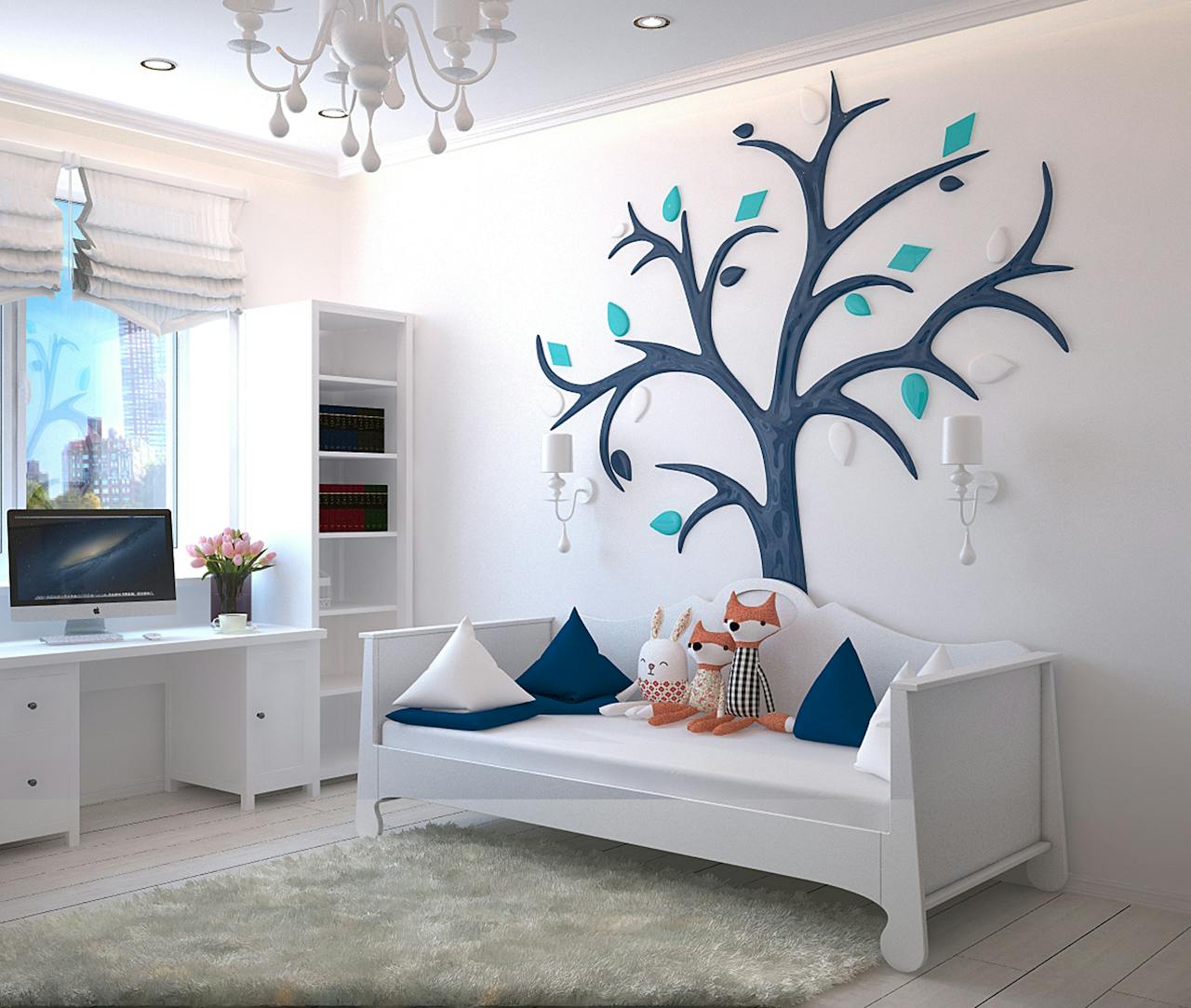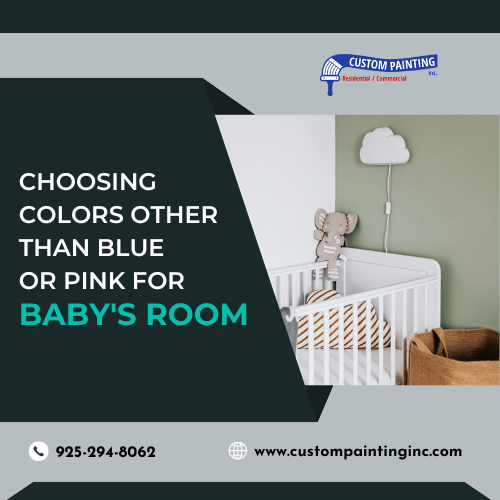When it comes to decorating a baby’s room, many parents might feel confined to the traditional palette of pink and blue. However, the world of color offers endless possibilities beyond these common choices. Opting for a different color scheme can not only give your baby’s room a unique touch but also create a nurturing environment that stimulates growth and creativity. This article introduces a fresh perspective on choosing vibrant and unconventional colors for your little one’s first space, encouraging parents to think outside the conventional color box.
Why are Blue and Pink the Common Colors for a Baby’s Room?
Choosing a color for a baby’s room often defaults to the traditional hues of blue and pink. These colors have been deeply ingrained in our cultural fabric as the go-to choices for newborns, but the reasons behind this trend stretch back further than many might realize. Here’s a closer look at why these colors dominate nursery design:
Historical Associations
The association of blue and pink with boys and girls, respectively, has roots that date back to the early 20th century. Initially, pink was considered a stronger color suited to boys, and blue was viewed as more delicate and dainty, appropriate for girls. However, by the 1940s, this color assignment had reversed. Theories suggest that this switch was influenced by manufacturers and retailers who saw an opportunity to market gender-specific clothing and products. As a result, these colors became entrenched in societal norms, guiding parents in their choices for everything related to their children, including room decor.
Marketing Strategies
The commercialization of baby products has played a significant role in perpetuating the popularity of blue and pink for baby rooms. Retailers and manufacturers have marketed these colors aggressively, creating a clear divide in the products available for boys and girls. This marketing is evident in everything from clothing to toys to room decor, reinforcing the color code. As these products saturate the market, they normalize the color association for new parents, making blue and pink the default options.
Psychological Impacts
There is a belief that colors have psychological effects, which has influenced the choice of blue and pink for nurseries. Blue is often associated with calmness and serenity, qualities believed to be beneficial for babies, especially boys. Pink, on the other hand, is thought to evoke warmth and comfort, traits that are deemed suitable for girls. These color choices are often made in the hope of fostering a calming and nurturing environment for the baby, aligning with traditional views of gender roles.
Cultural Expectations
Cultural expectations also reinforce the choice of blue and pink for baby rooms. In many societies, gender identification by color is deeply embedded, with relatives and friends often purchasing gifts and decorations in these colors once a baby’s gender is announced. This societal pressure can influence parents’ decisions, leading them to choose these colors to align with cultural norms and expectations, thereby avoiding confusion or the need to correct mistaken gender assumptions.
Other Colors You Can Apply to a Baby’s Room

When decorating a baby’s room, stepping away from the conventional blue and pink can open up a palette that’s both refreshing and stimulating. Choosing alternative colors can invigorate the nursery’s atmosphere and provide a unique environment for your child to grow up in. Here are some appealing colors that can transform a baby’s room into a vibrant and soothing space:
Green
Green is a versatile color that brings a sense of tranquility and nature into any space. Its calming effect makes it a perfect choice for a baby’s room, promoting a peaceful and restorative environment. Shades like mint or sage are soft enough to be comforting while still adding a lively touch that can stimulate a baby’s visual senses. Green also pairs well with a wide range of other colors, making it easy to accessorize with different decor elements.
Yellow
Yellow is synonymous with brightness and cheer, making it an excellent choice for creating a stimulating and joyful nursery. A soft, buttery yellow can warm up a room without overwhelming it, providing a sunny disposition that’s beneficial during early development stages. It’s important to choose a softer shade to avoid the harshness that can come with brighter yellows, ensuring the room remains a comforting, happy place for the baby.
Purple
Purple is a rich, luxurious color that can bring a sense of creativity and imagination to a baby’s room. Lighter shades like lavender are particularly soothing and can be as calming as more traditional nursery colors. Purple offers a royal touch that is not commonly used in nurseries, making it a unique choice that can stimulate mental and visual development in children through its vibrant yet serene hues.
Orange
Orange is a warm, energetic color that can create a cozy and inviting atmosphere in a baby’s nursery. Soft shades like peach or apricot provide a gentle backdrop that is vibrant enough to be engaging but not so bold as to disrupt sleep. Orange is a great color for creating a friendly and lively space, encouraging interaction and play as the child grows.
Grey
Grey is an excellent neutral alternative that offers flexibility in decor while maintaining a stylish, modern look. It provides a soothing backdrop that can be paired with splashes of more vibrant colors in accessories and furniture, allowing the room to adapt easily as the baby grows older. Grey is soft enough to be calming but also sophisticated, giving the nursery a contemporary edge.
Tips for Choosing the Color and Paint for a Baby’s Room

Selecting the right color and type of paint for a baby’s room is an important decision that can influence both the aesthetics of the space and the well-being of your child. The right choice creates a nurturing environment conducive to sleep and growth. Here are some practical tips to help you choose the best color and paint for your baby’s room:
- Consider Safety First: Opt for paint that is low-VOC (volatile organic compounds) or zero-VOC to minimize exposure to harmful chemicals. These paints are safer for your baby’s health and are less likely to cause irritation or allergic reactions.
- Test Colors Before Committing: Paint colors can look dramatically different under various lighting conditions. Purchase small samples of the colors you’re considering and paint large swatches on different walls in the room to see how the color changes throughout the day and under artificial lighting at night.
- Think Long-Term: While it’s tempting to choose trendy or bold colors, remember that babies grow quickly, and their rooms will need to adapt. Selecting a color that will grow with your child will help avoid the need for frequent repainting. Neutral tones can be easily adapted with accessories and decorations as interests and ages change.
- Use Color Psychology: Colors influence mood and behavior, so choose hues that create a calming and restful environment. Soft shades of green, blue, purple, and warm neutrals can be soothing, while vibrant colors should be used sparingly, perhaps as accents.
- Incorporate Contrast and Visual Stimulation: Incorporating elements of contrast in wall colors or decorations can help with your baby’s visual development. Consider using wall decals or a contrasting border at a lower height that your baby will be able to see and appreciate from their crib.
- Balance with the Rest of the Home: Ensure the nursery’s color scheme somewhat aligns with the overall style and palette of your home. This creates a cohesive look and feel as you move from room to room, which is aesthetically pleasing for both the child and family.
- Finish Matters: Choose the right finish for maintenance and durability. Matte finishes can hide imperfections but are harder to clean. Semi-gloss or satin finishes are typically easier to wipe down and are better suited for areas that may get dirty, like near the changing table.
By following these tips, you can create a welcoming and functional nursery that will be a comfortable, safe space for your baby while also fitting beautifully within the style of your entire home.
Conclusion
Choosing unconventional colors for a baby’s room opens up a world of possibilities that extend beyond traditional pink and blue. From soothing greens and lively oranges to gentle purples and versatile greys, the options are both vast and exciting. These creative choices allow parents to design a nursery that reflects their style while providing a stimulating environment for their baby. If you’re looking to bring your vision for a beautifully unique nursery to life, consider reaching out to Custom Painting, Inc. Our expertise can help guide you in selecting the perfect color scheme, and we’re just a call away at (925)-294-8062, or you can fill out our Contact Form to start your project today.

